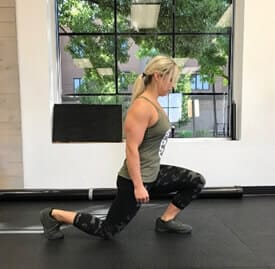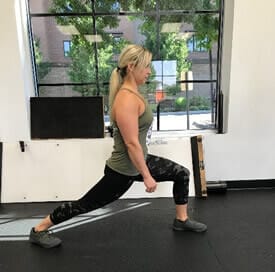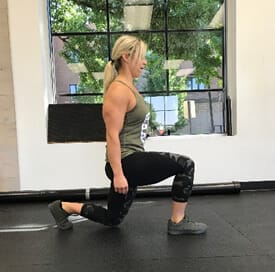Lunges are one of the best classic lower body exercises around. One of the things I like about lunges are they load your body unilaterally. Meaning, each leg is supporting you in a totally different way. In a typical squat, you can favor one side of your body a little without it being too obvious. My clients who have hip-misalignments don’t really know they have issues until I have them do lunges or split squats; then, it becomes obvious one side of their body works better than the other side. This is important to not only know, but to correct. If it’s simply a muscle engagement problem or an unbalanced strength issue, it can be easily fixed. If it’s a postural or structural issue, you may need to seek help from a professional.
So, what’s the trick to performing lunges correctly? It’s all in the hips. In my opinion, the hips are the control point for lunges. When you lunge, if you allow the knee of your front leading leg to go forward too far, you will not engage and use your glutes (figure 1). This is a common problem with a lot of people. If you aren’t using your glutes, you’re putting a lot of pressure on your knees which could result in knee pain. All you have to do is focus on loading your weight on the heel of the leg that is in front. This will allow you to keep your bottom back and glutes engaged. (figure 2)
The second important point is to make sure you’re allowing your rear leg to bend at the knee and keeping the weight on the heel of the leg that is in front. If you feel like you are stretching the quad of the rear leg as you lunge, you are probably holding a lot of tension in that leg and not allowing it to bend and fall towards the ground. (figure 3)
If your muscles and connective tissue is tight, you may not be able to go down as far as others, but the basic idea is to create two 90 degree angles with your legs in the bottom of a lunge. (figure 4)
Once you’ve mastered the lunge with your body weight, start adding weight in the form of a kettle bell or dumbbell. It can quickly become a full body exercise and challenge your coordination and strength.

Figure 1

Figure 2

Figure 3

Figure 4

